Today’s Current Affairs: 7th February 2025 for UPSC IAS exams, State PSC exams, SSC CGL, State SSC, RRB, Railways, Banking Exam & IBPS, etc
Table of Contents
Stryker Infantry Combat Vehicles:
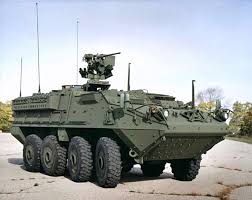
Amid the upcoming visit of Indian Prime Minister to Washington DC, several defence deals in the pipeline are in focus, among them the deal for co-production of Stryker infantry combat vehicles.
- Stryker is a family of eight-wheel-drive combat vehicles built for the US Army.
- It was jointly developed by General Dynamics Land Systems (GDLS), Canada and the General Dynamics Land Systems Division in the United States.
- It was the first new military vehicle inducted into US Army service since the Abrams tank in the 1980s.
- The Stryker family includes various configurations such as Infantry Carrier Vehicle (ICV), Mobile Gun System (MGS), medical evacuation vehicle, fire support vehicle, anti-tank guided missile carrier, and reconnaissance vehicle, among others.
- These vehicles are valued for their speed and flexibility, particularly in urban warfare and quick response scenarios.
- Stryker can be transported on the ground using trucks or by air on C-17 and C-130 aircraft already in the Indian Air Force fleet.
- Key features:
- Armament: Equipped with a 30 mm cannon and a 105 mm mobile gun
- Hull Construction: V-hull made of high-hardness steel with an additional layer of ceramic tile armor for enhanced protection
- Crew and Capacity: Operated by a two-person crew and can carry a nine-man infantry squad
- Range: 483 kilometers
- Top Speed: Approximately 100 km/h.
Fort William: Renamed
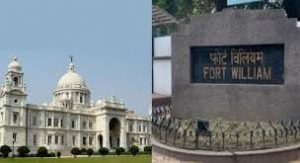
Fort William in Kolkata, the headquarters of the Eastern Army Command, has been renamed Vijay Durg recently.
- It was built by the British in 1773 and was named after King William III of England.
- It is located on the eastern bank of the river Hooghly in Kolkata, West Bengal.
- Today, it is the property of the Indian Army. It also serves as the headquarters of the Eastern Command.
- The original fort was built by the English East India Company in 1696.
- Initially, it comprised wings and an inner bastion where prisoners were hauled, which is why it was known as ‘the black hole of Calcutta’.
- In 1756, Siraj-ud-Daulah, the Nawab of Bengal, attacked the fort and captured it.
- After the fall of Siraj-ud-Daulah in the Battle of Plassey, the fort was demolished.
- Thereafter, Robert Clive began constructing a new fort. The fort was completed in 1773 and stands as present-day Fort William.
- The fort is octagonal in shape and has an imposing structure made out of brick and mortar.
- It is spread over 70.9 acres and is embellished with hundreds of arched windows that overlook lush green gardens.
- Meticulous stonework adorns the surface of the building.
Bryospilus bharaticus:
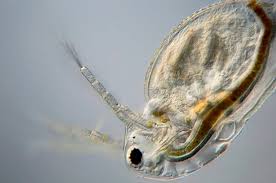
A new species of water flea was discovered from moss growth found on walls of Korigad Fort near Pune and named it as Bryospilus (Indobryospilus) bharaticus n. sp.
- Bryospilus bharaticus is a species of water flea belongs to Bryospilus genus.
- This recent discovery from western India is the first for the whole of Tropical Asia.
- It uses antennae as ‘supports’ to crawl through thick, debris-filled water films on moss.
- The antennae have big spines that assist sideways and forward movement.
- The fleas’ main eye is absent because it lives in reduced light and does not require colour distinction for foraging.
- It has been found in semi-terrestrial habitats in rainforests of West Africa, South and Central America, and New Zealand.
- The distant relatives of this species are found in open waters, while many are found in littoral (vegetated) regions of different water bodies.
- The genus Bryospilus is a unique animal with characteristic adaptations suited for living in “semi-terrestrial” environments, such as water film found on mosses.
- Ancestors of this species were potentially present on the Indian subcontinent before the breakup of Gondwanaland started approximately 200 million years ago.
Ranikhet Disease:

Suspected highly virulent Ranikhet disease is said to have caused the death of nearly 1.5 lakh chickens in Eluru, Guntur, Prakasam, and the twin Godavari districts in Andhra Pradesh recently.It is a highly contagious viral disease that affects birds, particularly poultry such as chickens, turkeys, and ducks.
- It is caused by infections with virulent Avian avulavirus 1 (AAvV-1), commonly known as Newcastle disease virus (NDV) and designated as avian paramyxovirus-1 (APMV-1).
- It attacks the respiratory, nervous and digestive systems of birds.
- It causes production drops/fertility problems.
- Morbidity is usually high, and mortality varies from 50 to 100 percent.
- It is a minor zoonosis (disease of animals that can also infect humans) and can cause conjunctivitis in humans, but the condition is generally very mild and self-limiting.
- Transmission:
- Direct contact with secretions, especially faeces, from infected birds
- Contaminated feed, water, implements, premises, human clothing, etc.
- Newcastle disease viruses can survive for several weeks in the environment, especially in cool weather.
- Symptoms:
- The symptoms vary according to the age of the affected birds.
- The first symptoms usually observed in young birds are sneezing, gasping, and often droopiness.
- It is in this stage of the disease that the manifestations rather closely resemble those of infections bronchitis.
- Within a short time after the appearance of respiratory symptoms, deaths occur in a flock in quick succession and in increasing numbers from day to day.
- Treatment:
- At present there is no effective treatment.
- Proper housing and general good care are indicated in an effort to shorten the duration and severity of the infection.
Exercise Ekuverin:

The 13th edition of joint military exercise ‘Ekuverin’ between the Indian Army and the Maldives National Defence Force has commenced.
- Exercise Ekuverin is a bilateral annual military exercise, conducted alternatively in India and Maldives since 2009.
- Ekuverin means ‘Friends’ in Dhivehi language.
- It is aimed at enhancing interoperability in counter insurgency and counter terrorism operations, and carry out joint humanitarian assistance and disaster relief operations.
- It is being conducted in Maldives this year. In 2023, it was conducted at Chaubatia in Uttarakhand.
- Both nations have very close and friendly relations in economic, cultural and military cooperation. ‘Ex. Ekuverin’ will assist in further bolstering these ties between the two nations.
Iskander-M:
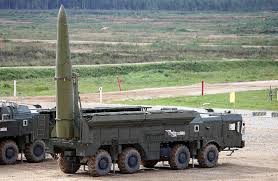
The Russian Federation is reportedly about to start the production of Iskander-M tactical ballistic missiles in large numbers.
- The Iskander (Western reporting name: SS-26 Stone) is a road-mobile short-range ballistic missile system, developed by Russia.
- It entered Russian service in 2006. It was first used by the Russians in 2008 against Georgia.
- It is designed for tactical strikes on small, high-value land targets.
- This system can use different types of missiles.
- It is 7.3 meters long, 0.92 meters in diameter, and has a launch weight of 3,750 kilograms.
- The missiles possess a maximum range of 500 km and carry payloads between 480 and 700 kg.
- It can carry conventional and nuclear warheads.
- Its missiles can travel at up to seven times the speed of sound (Mach 7) and can reach an altitude of more than 30 miles.
- It employs a maneuverable reentry vehicle (MaRV) and decoys to defeat theater missile defense systems.
- It is also equipped with various systems for in-flight correction and self-targeting, allowing the missile to overcome missile defense systems.
- Variants:
- Iskander-E: Export version, range: 280 km.
- Iskander-K: New version, unveiled in 2007, with a new cruise missile R-500, range: 280 km.
PRASHAD Scheme : Clear-Cut Standard Operating Procedure

A Parliamentary committee has asked the government to develop a “clear-cut Standard Operating Procedure (SOP)” and obtain prior clearances and approvals from relevant authorities for timely completion of projects in the Spiritual Tourism Circuits under the PRASHAD scheme.
- Pilgrimage Rejuvenation and Spirituality Augmentation Drive (PRASAD) scheme was launched by the Ministry of Tourism in 2014.
- It is an initiative that aimed at transforming the cultural preservation and spiritual travelling across identified pilgrimage destinations.
- Objectives:
- Upgrading and maintaining the strength of the infrastructure of pilgrimage destinations that includes the roads, water supply, sanitation and waste management system
- Improving the travel conditions for the travelers by improving the connectivity through road, rail and airways
Starting conservation projects that help in preserving and conserving the pilgrimage sites of cultural and spiritual significance - Advocating the cultural, religious and spiritual significance of pilgrimage sites attracting domestic and international tourists
- Creating opportunities for the local communities through skill development and livelihood generation programmes that relate with pilgrimage tourism
- Adopting sustainable development practices that promote eco-friendly tourism
Mount Taranaki : In News
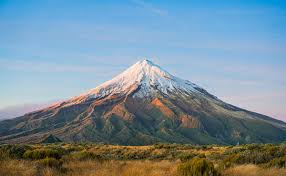
Mount Taranaki, now known by its Maori name Taranaki Maunga, in New Zealand has achieved a human status.
- It is a snow-capped dormant volcano and the second highest mountain (8,261 feet) located in North Island of New Zealand.
- It is a stratovolcano (also called a composite cone) – and is made up of alternating layers of ash and lava flow.
- It was created by subduction of the Pacific Plate below the Australian Plate.
- It has two official names – Mount Egmont and Mount Taranaki.
- It is located in Egmont National Park.
- It is one of the most symmetrical volcanic cones in the world.
- There is a circular ring plain of volcanic material formed from lahars and landslides.
- Mount Taranaki has become the third natural feature in New Zealand to be bestowed with an individual (human) status, after Te Urewera National Park and Whanganui River.
- The Indigenous Maori people of New Zealand respect the snow-covered Taranaki Maunga as a sacred ancestor.
Trickle-Down vs. Trickle-Up Approach:

Jasmine Shah’s book, The Delhi Model highlights Delhi’s trickle-up economics, contrasting it with India’s traditional trickle-down approach.
Trickle-Down Economics:
- Focuses on wealth accumulation at the top, assuming benefits will gradually reach lower income groups.
- Prioritizes corporate tax cuts, subsidies for big businesses, and deregulation.
- E.g. India’s corporate tax cuts (2019) reduced revenue for social programs.
Trickle-Up Economics:
- Directly invests in lower and middle-income groups to boost demand and economic growth.
- Prioritizes public welfare, education, healthcare, and employment programs.
- E.g. Delhi’s economic model reduced unemployment (1.9%) and public debt-to-GSDP ratio (3.9%).
Nigeria’s Waste-to-Wealth Model:

Nigeria’s plastic bottle collectors are transforming waste into economic opportunities, addressing both pollution and unemployment.
Informal Waste Collection as a Business:
- Plastic bottle collectors turn waste into economic value, creating employment and income opportunities.
Socio-Economic Factors Influencing the Model:
- Education: Higher education improves business approach towards waste collection.
- Family Size: Larger families view it as a means to sustain livelihood.
- Religion & Culture: Islamic teachings on resource management (Israf & Zakat) and African traditional values encourage waste collection.
- Gender Dynamics: Women face barriers to entry, requiring microfinance and support programs.
Policy Measures to Improve Waste Management:
- Government-backed education programs to improve waste collectors’ business knowledge.
- Formalization of waste collection through cooperatives, microfinance, and inclusion in urban policies.
- Community engagement programs leveraging cultural and religious values to encourage sustainable waste collection.
Teesta River : Reconstruction Of The Teesta-3 Dam
The Environment Appraisal Committee (EAC) has approved the reconstruction of the Teesta-3 dam in Sikkim, despite concerns over environmental safety and disaster risks.The Teesta River originates from Tso Lhamo Lake in the Himalayas, near the Pahurni and Khangse glaciers in Sikkim. States it pass through: Sikkim and West Bengal.Tributaries: Left-bank Tributaries: Lachung Chhu, Chakung Chhu, Dik Chhu, Rani Khola, Rangpo Chhu. Right-bank Tributaries: Zemu Chhu, Rangyong Chhu, Rangit River.
Maharashtra Mandates Marathi Language Use:
Maharashtra has mandated the use of Marathi language in all official communication across government, semi-government, local self-government bodies, and government-aided offices. The Marathi Language Policy, approved in 2024, recommends the use of Marathi in all public affairs.Article 345 of the Constitution states that a state legislature can choose one or more languages to be used for official purposes.This includes the language or languages already spoken in the state, or Hindi .Article 347 of the Constitution deals with the recognition of languages spoken by a section of a state’s population.
ICC Under-19 Women’s T20 World Cup 2025:
India won the International Cricket Council (ICC) Under-19 Women’s T20 World Cup 2025, defeating South Africa in Malaysia.It is organised by the ICC, it features national women’s under-19 teams competing in the Twenty20 format. First Edition: The inaugural ICC Under-19 Women’s T20 World Cup was held in 2023, with South Africa as the host. India won the maiden title, defeating England.
Jal Jeevan Mission Extended Till 2028:
Union Budget 2025-26 has extended the Jal Jeevan Mission (JJM) till 2028 with the aim of benefiting the remaining (20%) rural households.The JJM was launched in 2019 with the aim to provide drinking tap water supply to every rural household by 2024, targeting 55 liters per person per day.The extension of the Mission will focus on improving the quality of infrastructure and ensuring the operation and maintenance of rural piped water supply systems, with a strong emphasis on public participation.
India’s gold investments soared by 60% to $18 billion:
India witnessed a remarkable 60% surge in gold investments, reaching $18 billion (approximately ₹1.5 lakh crore), as per a report by the World Gold Council (WGC). This increase was driven by rising gold prices, reduced import duties, and heightened demand during festive seasons. India’s gold investment demand reached 239 tonnes—the highest since 2013—accounting for 20% of the global gold investment demand
ISRO has launched FEAST 2025:
The Indian Space Research Organisation (ISRO) has introduced the latest version of its structural analysis software, Finite Element Analysis of Structures (FEAST) 2025, at the 8th National Finite Element Developers’/FEAST Users’ Meet (NAFED08) held at IIT Hyderabad. The event, organized in collaboration with Vikram Sarabhai Space Centre (VSSC), brought together over 250 experts from academia, industry, and research institutions to discuss advancements in finite element-based structural analysis.
IOB Joins Global Partnership for Carbon Accounting:
Indian Overseas Bank (IOB) has become a signatory of the Partnership for Carbon Accounting Financials (PCAF), committing to measure and disclose the greenhouse gas emissions from its financed activities.This move reflects the bank’s commitment to measuring and disclosing its greenhouse gas (GHG) emissions associated with financed activities. With this initiative, IOB is not only aligning itself with international best practices in the financial sector but also reinforcing its role in India’s journey towards a net-zero future.
South Indian Bank Unveils Startup Current Accounts for Entrepreneurs:
South Indian Bank (SIB) has taken a significant step to support the rapidly growing startup ecosystem in India. The bank has introduced two specialized startup current account products, namely the SIB Business Startup Current Account and SIB Corporate Startup Current Account, both designed to cater to the unique needs of entrepreneurs. These accounts offer a range of benefits that aim to simplify banking for startups and help them focus on scaling their businesses.
Dubai will host the inaugural Global Justice, Love & Peace Summit:
Dubai is preparing to host the inaugural Global Justice, Love & Peace Summit on April 12-13, 2025, at the Dubai Exhibition Centre in Expo City. This event, organized by the I am Peacekeeper Movement, will gather 2,800 peacekeepers and 72 distinguished speakers, including 10 Nobel Laureates, heads of state, and religious leaders. Under the patronage of Sheikh Nahayan Mabarak Al Nahayan, Minister of Tolerance and Coexistence, this summit aligns with the UAE’s declaration of 2025 as the Year of Community. It aims to promote justice, love, and peace, and establish an ongoing global platform for such discussions in Dubai.
GMR Airports Joins United Nations Global Compact Initiative:
GMR Airports Ltd (GAL) has made a significant move by joining the United Nations Global Compact (UNGC), reinforcing its commitment to sustainability and responsible business practices. This partnership marks GAL’s dedication to aligning its operations with the ten principles of the UNGC, which include human rights, labor standards, environmental protection, and anti-corruption. Through this alliance, GAL aims to integrate these principles into its operational strategies, further contributing to the global sustainability agenda.




